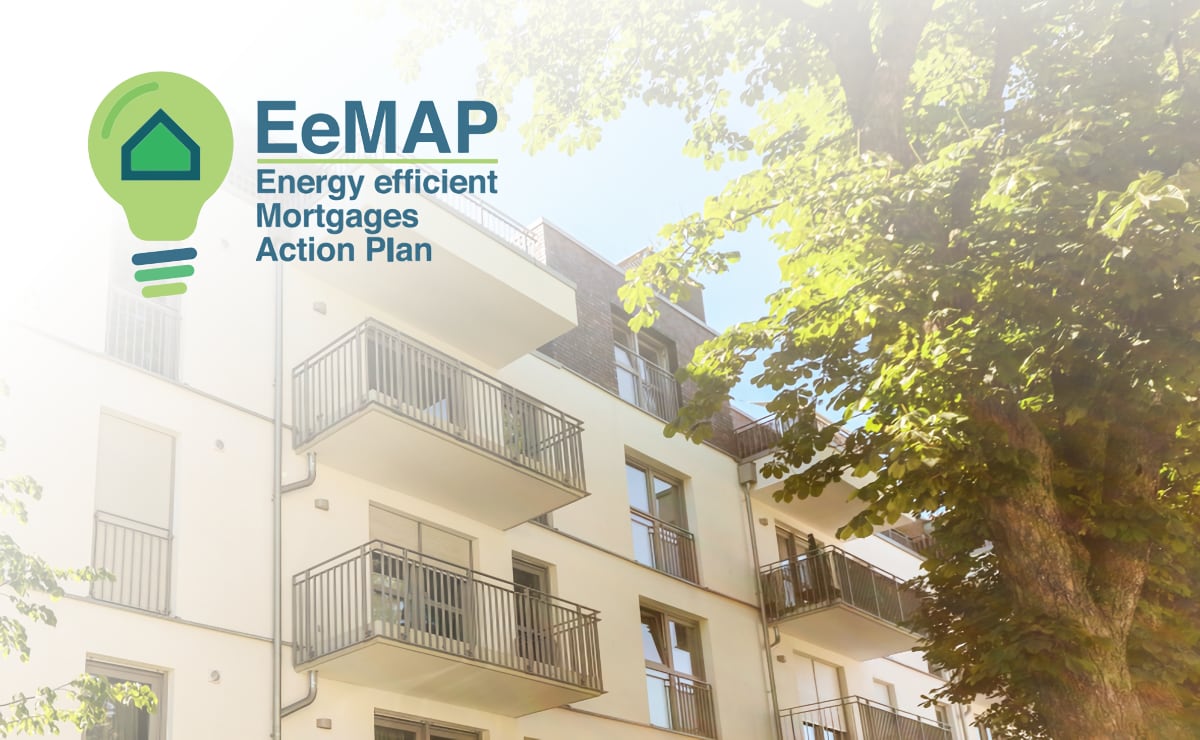
EeMAP
At the heart of the Initiative is the assumption that energy efficiency has a risk mitigation effect for banks as a result of its impact on a borrower’s ability to service their loan and on the value of the property. This means that energy efficient mortgages will represent a lower risk on the balance sheet of banks and could, therefore, qualify for a better capital treatment. Lower capital requirements deliver a strong incentive for banks to enter the market and, as a result, drive a broader incentive chain, in which all stakeholders, including EU citizens, issuers, investors and society as a whole, derive a concrete benefit.
To this end, the mortgage and covered bond industries can help to bridge the renovation gap with a private financing initiative, which is independent from but complementary to public funds, tax incentives and utility rebates, and in this way support the EU in meeting its energy savings targets, whilst at the same time creating a strong link between the Capital Markets Union and energy efficiency agendas.
Significantly, the EeMAP Initiative represents the first time a group of major banks and mortgage lenders, as well as companies and organisations from the building and energy industries have proactively come together to discuss the private financing of energy efficiency.
CGBC ACTIVITIES:

MORE ABOUT THE PROJECT
THE CONCEPT
The EeMAP is a market-led initiative focussed on the design and delivery of an “energy efficient mortgage”, which is intended to incentivise and channel private capital into energy efficiency investments. The underlying methodology (explained below) will incentivise the acquisition of energy efficient properties or the improvement of the energy efficiency of existing properties by way of preferential financing conditions linked to the mortgage.
The EeMAP is designed on the premise that the banking industry has the potential to play a game changing role in supporting the EU in meeting its EU energy savings targets and delivering on its COP21 commitments by bringing energy efficiency into the conversation with potential borrowers and then financing the operation.
To put the potential into perspective, more than 210 million units (equal to 89%) of the EU´s residential building stock, for ewample, were built before the year 2001, meaning substantial efforts are required to channel private capital into bringing energy inefficient homes in line with new energy standards. From a savings perspective, a renovated house that moves from an ‘E’ to a ‘B’ grade in its energy performance certificate (EPC) will save a family an estimated EUR 24,000 over 30 years, according to an analysis of 365,000 house sales in Denmark last year. Moreover, from a price perspective, an increase in energy performance can correspond to the adding of an extra 10-15 m² to the size of a property.
THE METHODOLOGY
Two key assumtions
The EaMAP builds on two key assumptions, which have already been recognised across a series of market and academic studies, and which will be further substantiated during the EeMAP Initiative. The first assumption is that improving the energy efficiency of a property has a positive impact on property value, reducing a bank’s asset risk. The second assumption is that energy efficient borrowers have a lower probability of default as a result of more disposable income in the household due to lower energy bills, reducing a bank’s credit risk:
The underlying business case
These risk mitigation effects for banks means that energy efficient mortgages have the potential to represent a lower risk on the balance sheet of banks and could, therefore, qualify for a better capital treatment. The underlying business case captures these benefits and articulates the following clear pathway to an attractive energy efficiency mortgage investment:
All stakeholders derive a concrete benefif
Lower capital requirements will deliver a strong incentive for banks to enter the market and, as a result, drive a broader incentive chain, in which all stakeholders, including EU citizens, issuers, investors and society as a whole, derive a concrete benefit.
The EeMAP Initiative seeks to develop a clear understanding
On the basis of a lower capital charge, banks providing energy efficient mortgages will offer the possibility of a preferential interest rate and/or additional funds at the time of origination of the mortgage/re-mortgaging in return for measurable energy efficient improvement in their property.
In parallel, this Initiative will help to coordinate market interventions, create synergies in the mortgage and covered bond value chain, delivering a virtuous circle between lenders, borrowers and investors from the origination of the mortgage to the pooling of energy efficient collateral that would be the underlying collateral for “green” covered bonds.
To this end, the EeMAP Initiative seeks to develop a clear understanding of how to differentiate between ‘green’ and ‘conventional’ funding and how to capture energy efficiency within financial institutions’ lending practices using energy efficiency indicators. To incentivise both the acquisition of energy efficient properties or the improvement of the energy efficiency of existing properties, the financial incentives linked to the energy efficient mortgage will be determined on the basis of a progressive scale:
Broader Perspective
The underlying business case also interrelate with a broader set of political priorities:
- Energy Efficiency: The EeMAP Initiative fits well within the European Commission’s own framework for climate and energy policies, which aims to encourage investments and boost private finance for EE investments/buildings. Particularly it is worth highlighting that to reach the 20% energy saving target by 2020, the EE Directive’s Article 4 includes a requirement for Member States to establish and periodically update “a long-term strategy for mobilising investment in the renovation of the national stock of residential and commercial buildings”.
- Jobs & Growth: The EeMAP boosts private investment in energy efficiency improvements, largely through retrofitting, which will in turn boost SME activity in the retrofitting sector, thereby contributing to the European Commission’s growth and jobs agenda.
- Financial Stability: This pan-European market-led Project will trigger market due diligence for borrowers, issuers and investors, reduce probability of borrower default, facilitate de-risking of banks’ balance sheets and management of non-performing loans, as well as enhance transparency and pricing in the market by adding a green factor to real estate.
